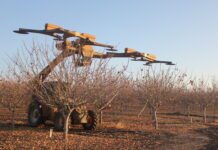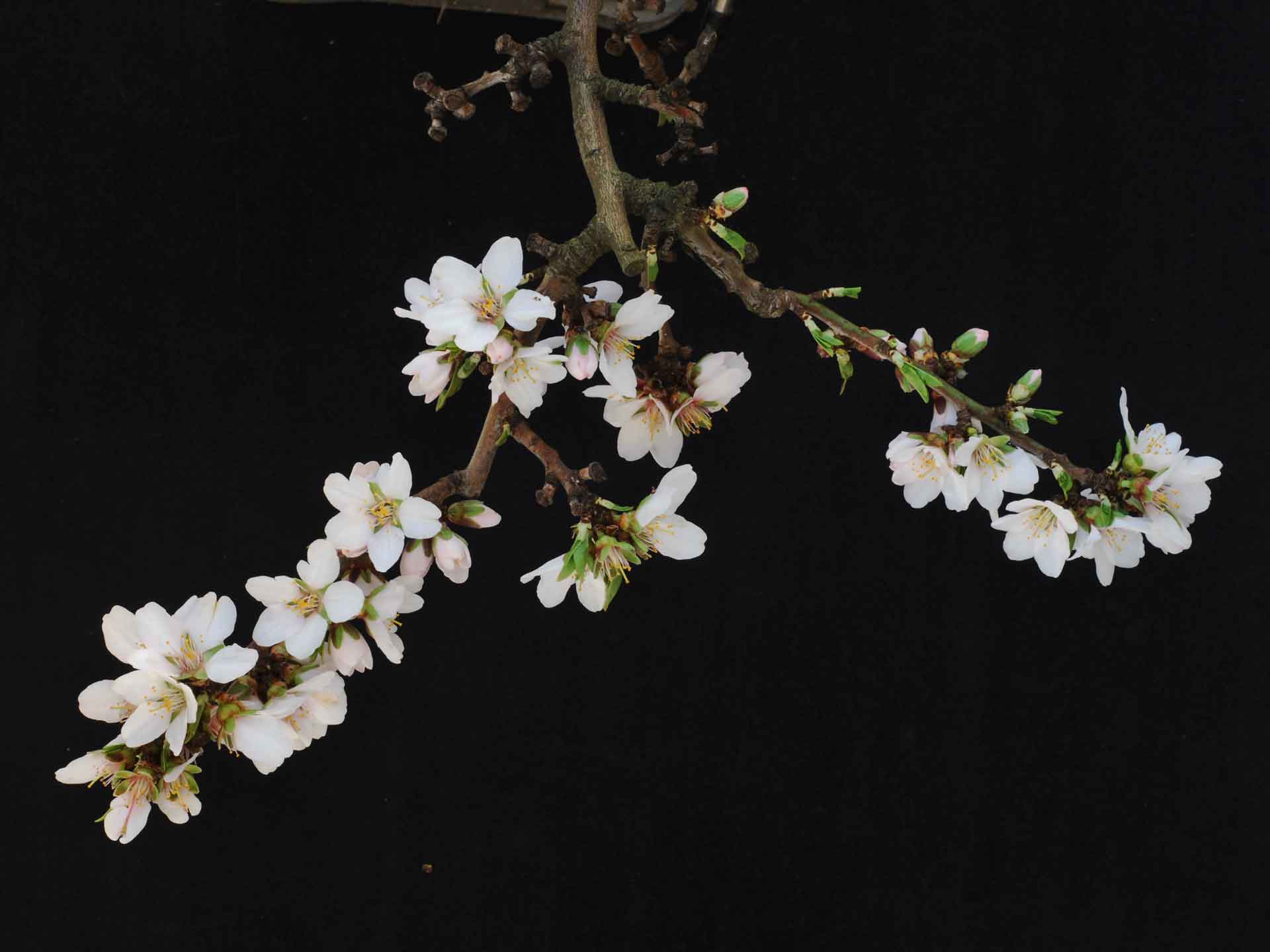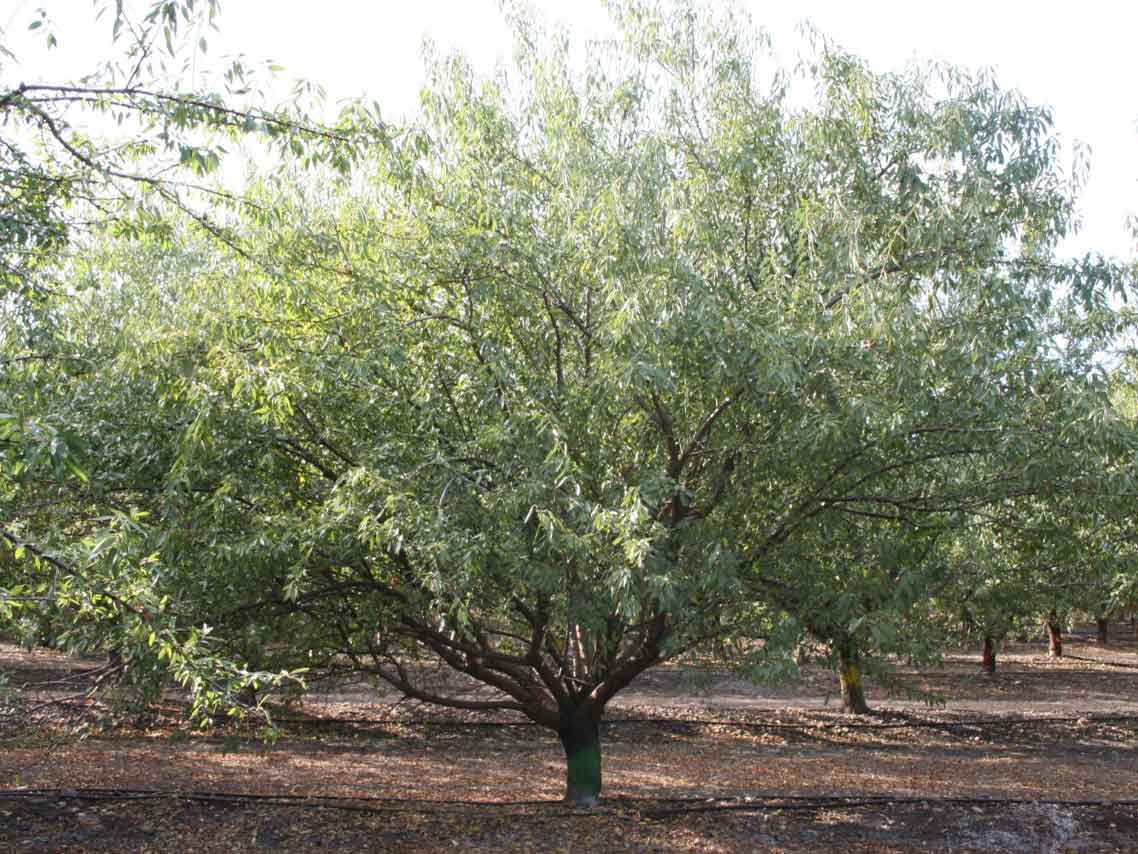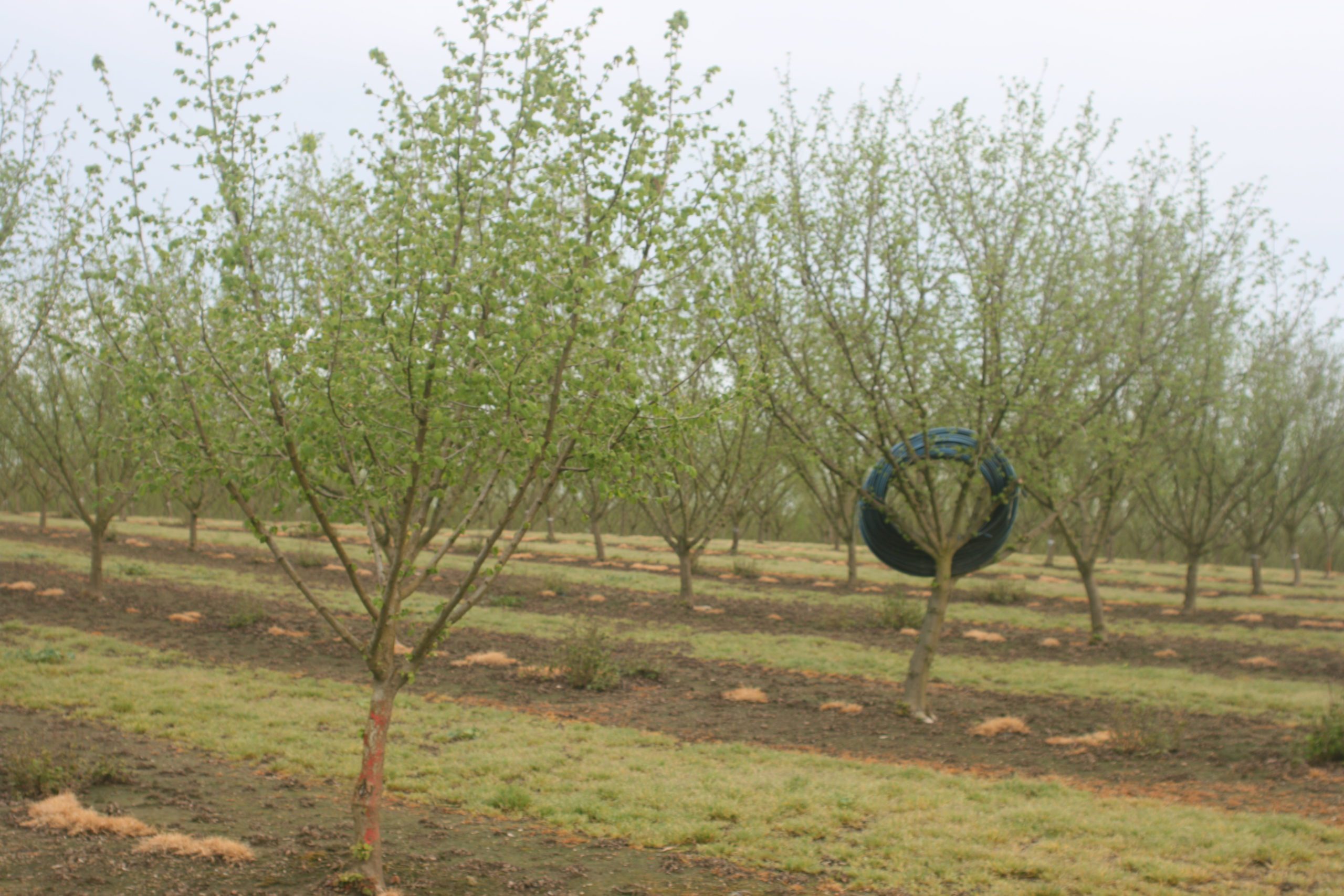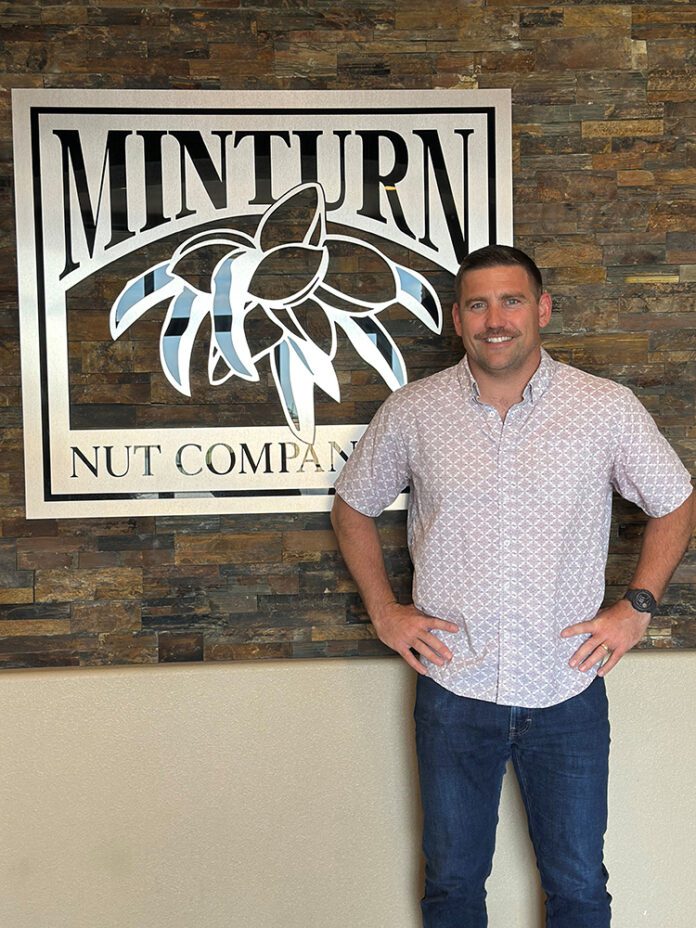
Listen to the audio version of this article. (Generated by A.I.)
Darren Rigg of Minturn Nut Co. doesn’t grow almonds, but he is deeply rooted in the almond industry. His dad has always worked in the almond business, and Darren has worked on the processing and marketing side of the industry for more than 15 years.
His hands-on experience with farming came from his mom’s family’s dairy farm when he was growing up. That immersion in the farming community led him to choose to major in ag business at Chico State, graduating in 2008.
Drawn to the tree nut industry because of its international component, he has an insider view of the almond market. Rigg shared with West Coast Nut his story and views on the current state of the tree nut industry.
Q. Tell us a little about you and your journey to join the tree nut industry.
After I graduated college, I was able to get on working for a Northern California almond processor. I worked there for a couple of years, and then I got an opportunity to start working in sales for a pistachio outfit out of Tulare, where they also did marketing for almonds, walnuts and pecans. I spent six years with them. During that time, I also got my MBA from Fresno State. That ultimately led me to Minturn, where I’ve been for eight years.
Q. What was it about farming that made you want to be a part of this industry as a career?
I was always exposed to it. I grew up in the small town of Escalon, Calif., so a lot of my friends and family were involved in farming. What drew me to the nut business specifically is I love the heavy international component of it. Sometimes I felt like being in dairy, you can kind of become an island. To be successful in the almond business, because we’re so global, you really have to pay attention to the international markets. We’re over 70% export. It made an intriguing dynamic when I was in Chico getting my ag business degree that I wanted to go toward this more export-oriented industry.
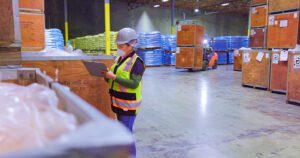
Q. Talk about some of the changes you’ve seen over your time in the industry.
Well, we’ve seen the crazy growth of India in that time where it’s now our leading export market. India has bypassed China by leaps and bounds, and we’ve also experienced more of a reliance on the Middle East and North Africa. These emerging markets have really been the driver of growth since 2010 in our industry.
We did also have a major domestic growth curve from 2010 to 2020. That was being led by more of the ingredient space such as almond paste, milk and flour. But that now seems to have abated a bit. It’s become highly fragmented. Consumer cultural trends regarding what they want to eat have changed. It’s becoming more difficult to sustain the growth. Americans have the highest per capita almond consumption in the world, so it’s not too surprising that a saturation point could be hit.
Obviously, processing has changed a lot. The costs have gone through the roof. But beyond that, you’re seeing more of a reliance on automation. You have to be doing that from a competitive standpoint. Not only that but also food safety and traceability functions. There’s a reliance on that technology to allow you to be more efficient and effective.
We know that labor in certain times can be scarce and hard to come by. This gives a little bit of a relief valve to that, but I will say that it doesn’t give the labor relief that a lot of the public thinks it does.
What’s happening now is our demands out of the employees are becoming higher. We need people with a higher skill set. They make more money. We need people that have a higher level of sophistication and specialization that know how to use the equipment and maximize its use.
Q. What does that higher-skilled labor market look like?
It’s hard. You train somebody up and all of a sudden another company swoops them up. Really it’s good for employees, especially those with ambition.
We are going to slowly be dipping more and more into AI. There’s already machine learning for sampling systems, sorting, sizing, etc. People who understand that software and that technology are going to increasingly be in high demand. That includes the software engineers and third-party contractors. They are going to become an increasing expense that we’re going to have.
And techs. There’s a huge demand for service techs because nothing runs perfectly 100% of the time.
Q. How does moving toward AI help the industry?
If you are a handler and you’re not investing in that, then your grower will ultimately get left behind because the industry is moving in that direction. If you’re not competitive and you’re not reinvesting in your facility, and you’re not getting the latest and greatest in technology that is moving at a rapid pace, your grower returns will suffer.
Q. Talk a little bit about the market.
From where we were, we’re a lot better off. Prices today are a good 70% to 75% higher than they were the same time last year, and the summer before that, and the summer before that. So, in a way, we’ve kind of dug ourselves out of a trough that started with COVID, or around 2020.
Last year we had a shorter crop. We were able to reduce our carryout burden that helped lift prices, and up until a few months ago, we were really confident that demand was continuing to grow. We were going to conceive continued demand, and prices would continue to go up. Since then, things have shifted a little bit.
Some of this is my personal opinion, but it seems that the demand really just shut off, and part of that is higher prices. In some cases, we had prices that the marketplace hasn’t seen in 10 years. You would have to go back to 2015. Consumers are going to have to get reacquainted with these higher price points. And at those higher price points, the consumer-level demand starts to dissipate, especially in emerging markets.
North Africa, the Middle East, India, these are emerging markets, so they’re more price sensitive. They have a lot more elasticity in their demand. That’s something we should be wary of and pay attention to.
The frustrating part is that, yes, those are the highest prices in 10 years in some instances. But on the flip side, our costs have only gone up exponentially since then. 10 years ago, that was a real premium return. Now, 10 years later, with just the inflation farming has been through, it doesn’t feel like it. We would need more to make it sustainable for the return back to the grower than what we currently have.
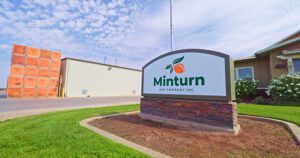
Q. When you look at the tree nut industry, what makes you most hopeful for the future?
For almonds, because of the terrible economic conditions the last few years in the almond market, people have not reinvested in their ranches. And it’s shown on the acreage reports. It’s shown in the total crop sizes we have now. We’ve gone backward. Total production is seemingly plateauing, even going down in certain years. Total plantings have gone down.
The number of orchard abandonments, which I think is undercalculated or underestimated, has gone up. And then, you throw in SGMA, there’s another new component with all this white zone, a lot of questionable deficit-irrigated areas. You start to see a situation where the state’s total supply is going to be stuck.
The total global supply of almonds is really what we need to look at. Again, I don’t see that changing all that much in the near term. The same economic and water constraints we have here are present in Spain and Australia. You’re looking at the next three to five years keeping your fingers crossed. You can definitely see the light. It potentially could be a healthy marketplace where we’re able to bring a solid return back to the grower.
Q. What do you think are the biggest assets of the almond industry in California?
I think our biggest asset is that we speak on a much more unified front, especially internationally, than a lot of people would even think or assume. And what I am talking about, I mean into India, into the Middle East, there’s a certain reliability that they have where a buyer, when they’re buying a load of almonds, and it says California almonds and you know the packer it comes from, they have a certain level of security.
Because we’re a transparent industry, because there’s a lot of resources that we have that the growers, the handlers and the buyers can all grab onto, I think it does a fantastic job differentiating our brand and our market to continue that growth. Buyers want to invest in California almonds.
Q. What kind of advice would you give to a young person wanting to get into the tree nut industry today?
I believe in understanding from the ground up what the industry is. I encourage anybody to not go directly from the classroom into the office. Get your hands dirty. Listen to everybody throughout the supply chain. Try to get an understanding from the ground up, not just a certain executive or management level.
Have humility about not understanding everything. There’s a lot of ins and outs of our industry, and there’s also more than one way to go about it and still be successful. So, being open-minded to the different business philosophies out there I think is really, really important.
And get involved. The more involved you get, the higher the chance you’re going to meet those people that not only give you opportunities but give you some real nuggets of wisdom to absorb.
Q. What are your thoughts on the future of the family farm?
I have a fear that in my lifetime there’s going to be hardly any family farmers left. You almost have to be bigger and bigger, hire a trove of lawyers and accountants and have lobbyists in your briefcase. It’s hard to compete with the unlimited pocketbooks of some of these more investment-type outfits in the ag space.
And for me, here at Minturn Nut, we have over 400 grower partners, predominantly family farmers. I grew up around family farmers and in that community. I think it would just be catastrophic if they went away.
There’s just so many negative headwinds in ranch operating right now that I do see a lot of family farmers just saying forget it. Let’s sell and take the money while we can. These are not just local trends either; they are national.
Q. What do you think the biggest advancement has been in the industry during your career?
That’s a tough one. But you know, within my time here, and I’m mainly on the marketing side, the level of what you can do on your phone is insane. Anywhere in the world, you’re going to be able to know the almond market with the snap of a finger. WhatsApp, text messaging, emails, software systems, there’s real-time tracking and communication.
So, the marketplace is really advanced compared to when you would phone and fax over a contract. A lot of that has occurred during my time in the industry where it’s really gone to the next level on the marketing, and that has helped the grower because now they have more knowledge about what the day-to-day market is than ever before. It also helps assist buyers in making their procurement decisions. It’s now a 24/7 marketplace.
I would also argue that in my time, self-pollinators have become huge. From that standpoint, that might be more dramatic. When I started, there were no self-pollinators, really. And now we’re on the cusp of Independence becoming the second-largest variety by volume.
And obviously automation at the plant that I talked about earlier. But a lot of it is still the same: relationships, networking, hard work!
Q. What advancements do you think are going to have a big impact in the future?What we see at the plant, I think that’s where the next level in the future is going to be the AI. As that becomes better and more refined, I could see that having so much utility in production, but also in the field. I just think that that’s where the future is going to lay.







